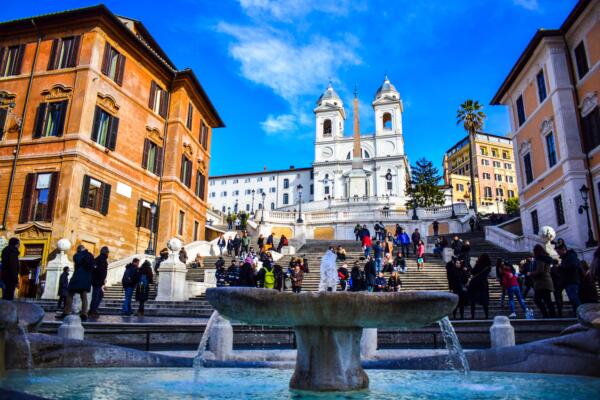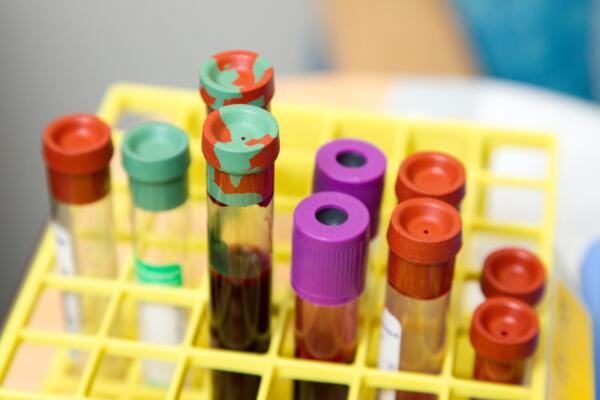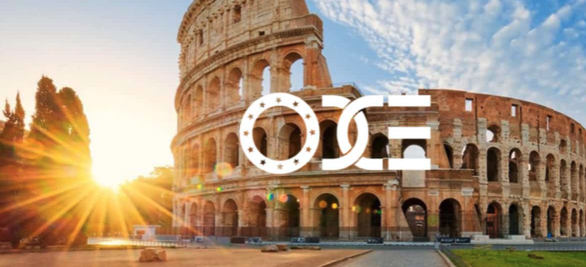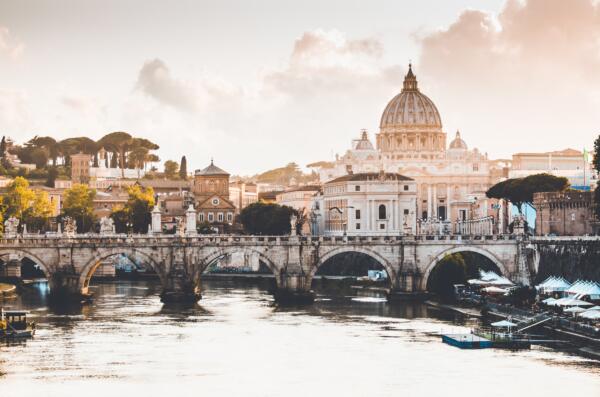Circular economy opportunities in Italy
Italy is a country with relatively scarce natural resources and its economy depends highly on family business and SMEs. Naturally, Italian entrepreneurs have been utilizing circular economy practices long before the term was coined, in order to make the best use of their resources. This developed in a nationwide culture that encourages the circular economy. This is reflected in Italy’s above-average performance in most of the EU commission’s Circular Economy Action Plan goals:
Italy’s status on targets and comparison to EU status between brackets ().
- min. 65% of municipal waste to be recycled by 2035 (Italy at 50%, +2.2% EU 2019.)
- min. 70% of all packaging waste to be recycled by 2030 (Italy at 68.3%, +2% EU 2018.)
- min. 32 % of the Union’s gross final consumption of energy to originate from renewable sources by 2030 (Italy at 18.2%, -1.8% EU 2019.)
Thinking about doing business in Italy? Below you will find information on policy landscape, circular economy strategy and selected priority areas!
Facts & Figures: Economic indicators
- Population (2020): 60.2 mln
- Nominal GDP (2019): €1,789 bln, worldrank: 8th
- GDP per capita (2019): €29,661
- Import from The Netherlands (2019): €20.5 bln
- Economic growth (2019): 0,3%
- Ease of doing business rank (2020): 58/190
- Corruption index (2020): 51/198
- Unemployment rate (2020): 10%
- Currency: Euro
- Time difference with The Netherlands: +/- 0.00 hrs
Circular economy indicators
- Global Innovation Index (2019): 28/129
- Recycling rate (2018): 49.8%
- Resource productivity: €3.49/kg of domestic material consumed
- Renewable energy consumption (2019):18.2%
- Circular material use rate (2018): 19.3%
- Circular economy emplyment (2017): 2.06%
- Value added by circular economy (2017): 1.07% of GDP
Italy ranks #1 in circular economy performance among the EU’s 5 main economies (parameters: production, consumption, waste management, market for secondary raw materials, investments and employment). Source
Policy landscape
Italian national plans that favor the transition to a circular economy involve:
Italy’s National Plan for Recovery and Resilience (PNRR), which sets a framework for investing the country’s share of the EU Next Generation package aimed at recovering from COVID-19 impact worth €223 Bn, which involves a major portion to be invested in CE related projects.
The National Action Plan on Sustainable Production and Consumption (PAN SCP) focuses on industrial symbiosis, product design for circularity, product-service systems, clean energy utilization, reverse logistics and reuse models.
The National Action Plan on Green Public Procurement (GPP) focuses on the sectors of waste management, services, energy, electronics, textiles, catering, transport, and more. Considered a powerful lever on the demand side.
Extended Producer Responsibility (EPR) has been well established for twenty years in Italy. This system ensures the achievement of recycling rates well above those set by the EU.
Gadda Law against food waste was introduced in 2016: a regulation that facilitates food donations and reduces food overproduction and waste at every stage of the food supply chain.
In collaboration with The Netherlands Embassy in Rome and the Consulate-General in Milan, the following opportunity areas have been defined as priority for the Circular Economy transition in Italy:
Circular Cities
Italy is made up of 20 regions, 110 provinces, and almost 8,000 municipalities. In general, Italian cities are moderately sized, with the biggest cities being: the capital Rome (2.9 m), Milan (1.4 m), Naples (1 m), and Turin (0.9 m). Unfortunately, Italy ranks among the poorest European nations in terms of air quality, which not only causes a threat to the wellbeing of inhabitants in cities but also to the tourism sector which is one of Italy’s major economic drivers. Moving towards more circular cities can help Italy remedy this issue among other problems, and amplify the beauty and livability of its cities. Italy’s commitment to its cities is reflected in the PNRR, which facilitates public investments in infrastructure and support for private initiatives that render cities greener and more prosperous for inhabitants. The Netherlands can offer Italy real insights in areas such as housing and infrastructure and sustainable business parks, mobility as a service, consumer goods, plastics and waste, waste to energy, food, and urban water solutions.
Transition to circular cities requires experimentation that involves businesses early on in the process. Municipalities would be a good starting point for cooperation, such as the Municipality of Milan, which is already taking impressive circular steps in green mobility and in food (Milan Urban Food Policy Pact).
Find more information and Dutch showcases in our Circular Cities brochure!
Photo by Chris Barbalis on Unsplash
Bio-economy
The bio-economy sector in Italy has a significant impact on the country’s overall productivity, with a contribution of almost 20% to the national GDP and 8.2% to employment. The biggest part of this contribution is mainly attributed to the agri-food sector. Innovation in this sector has been driven by the need for sustainable and circular production, with many start-ups active in the circular and bio-economy in Italy. The country is also known for its high-quality food production. With 15,8% (2019) of utilized agricultural area, Italy is one of the largest organic producers in the world. ‘The Italian Bio-economy Strategy’, updated in 2019, prioritizes agriculture and human nutrition and focuses on the potential of circularity and re-generativity.
In Italy, the total organic matter recovered and reused after biological treatment of water in 2019 was 7.8 million tons. Opportunities in this sector vary from using biomass to enrich soil, which is a big challenge in Italy with an annual soil loss of 8.3 tons/hectare (most in Europe). Producing bioenergy for the energy sector, and biomaterials as a new sustainable resource for the manufacturing sector are value opportunities as well.
Photo by Melanie Vaz on Unsplash
Green Chemistry
Green Chemistry goes hand in hand with bio-economy and is a sector that is gaining more and more attention in Italy. Cluster SPRING for green chemistry was founded in the Lombardy Region with the aim of supporting technologies and processes for bio-based and renewable materials and has 105 members. Novamont in Piemonte and Chimica Verde Bionet in Tuscany can be good candidates for cooperation in this sector.
The latest updates on Italian Green Chemistry initiatives can be found on ResearchItaly. Innovations such as bio-concrete from brewer’s yeast, green jet fuels, and bioplastics from vegetable residuals are being developed in University labs and R&D departments across the country.
Photo by Davide Carpani on Unsplash
Waste Management & Recycling
In Italy, waste is managed on a municipal level in accordance with national legislation and differs from one region to another. For disposal purposes the most common categories of waste are:
- Non-recyclable waste, landfill
- Source separated dry recyclable waste (plastic, paper, and metal)
- Organic waste
Currently, Italy is one of the leading European nations in waste collection and recycling, with an overall recorded national recycling rate in 2016 of 68% (excluding mineral waste), 49.8% municipal waste, 67.1% packaging, and 32.1% e-waste (under EU av.). Collection and recycling are more developed in northern and central Italy than in the south and in the islands. It is estimated that around 2 million tons of bio-waste are produced and are yet to be intercepted, which can be of great interest to Dutch biogas and compost operators.
There is a shortage in residual waste treatment and incineration facilities due to public resistance, thus, residual waste is often exported to other countries, which can be looked upon as an opportunity to explore more recycling options instead. WEEE and rubber/tires also show a promising opportunity in Italy, with respectively 320,000 tons and 176,000 tons collected in 2018.
Photo by Etienne Girardet on Unsplash
Water Management
A circular economy in water makes perfect sense for Italy and can result in extreme value recovery. Italy is one of the top water consuming countries, consuming over 25% of the European average with a per capita daily consumption rate of 419 liters. The largest share of water consumption in the country tracks back to the agricultural sector (almost 60%), followed by civil and manufacturing use. 85% of water in Italy is sourced from underground reserves and 15% is sourced from surface water bodies. Problems regarding water management in Italy stem from a poorly performing infrastructure system, resulting in losses of up to 37.7%. From an organizational perspective, water management in Italy is fragmented, with multiple independent authorities in different regions, each with its own standards and regulations and lacking overall alignment. It is however common practice in Italy to have public and private partnerships in water management and even outsourcing fully to the private sector. This offers an opportunity for Dutch players with their advanced water technologies to operate in the market.
There is a clear demand for improving water infrastructures in Italy, as well as water usage efficiency and re-use in different industries and for civil use. An interesting area to explore is biogas production from sewage sludge, which is still not very common in Italy despite the large amount of sludge produced (3.1 million tons in 2018). Gruppo CAP can be a strong partner and reference point for water services in the country. Italian islands, such as Sicily in particular, are underdeveloped in terms of wastewater treatment. Decentralized treatment solutions can be a big hit in Italy, since the country is full of small communities that are somehow isolated, a perfect solution here can be Dutch company Bluecon’s compact water treatment unit.
Photo by Dan Novac on Unsplash
Fashion & Textiles
The textile and clothing sector is the third largest manufacturing sector in Italy, with 450,000 employees and more than 50,000 companies operating throughout the country, and is at the center of a transformation that looks to sustainability as a competitive lever through a more rational and conscious use of raw materials. Tonello is a best practice of an Italian high tech garment machinery manufacturer, creating machines that eliminate waste, save energy, recycling water, and resulting in overall efficiency in finishing garments. Numerous brands such as Rifò are incorporating circular practices in their design and operations. Dutch companies have also excelled at making fashion more sustainable and circular through the value chain, whether in design, fiber and yarn production, knitting, dyeing, or finishing. An example of a Dutch-Italian cooperation is the production of wool garments sourced completely from used clothes and designed digitally using 3D technology, which results in significant savings in prototyping and modeling. This collaboration was between the Dutch collective Studios PMS and the Italian company COMISTRA. For more examples of Dutch innovation in circular textiles, check out the latest circular trends in this textiles brochure from the Netherlands Enterprise agency and HCH.
Photo by Hannah Morgan on Unsplash
Major events 2021
- Euro-Global Conference on Biotechnology & Bioengineering (Rome) 6-8 September
- Pre-COP (Milan) 30 September – 2 October
- Ecomondo (Rimini) 26-29 October
- G20 Summit (Rome) 30-31 October
See also related items below.
Relevant networks
- Circular economy club
- Ministero dell’ambiente e della tutela del territorio e del mare
- Ministero per le Politiche Agricole Alimentari e Forestali
- Enea – national agency for new technologies, energy, and sustainable development
- Intesa Sanpaolo Innovation Center
- AISEC – ASSOCIAZIONE ITALIANA PER LO SVILUPPO DELL’ECONOMIA CIRCOLARE
- SPRING Italian Cluster for Green Chemistry
- Sustainable Development Foundation
- Circular Economy Network
- Ecomondo
- Tondo
Useful links & reports
Country specific links
- Netherlands embassy in Rome
- Netherlands consulate general in Milan
- Italian embassy in the Netherlands
Reports
- Position Paper 2020 – Alleanza per L’economia Circolare (IT)
- Italy’s Circular Economy Report 2020 (IT)
- Statistical Information for the 2030 SDG Agenda in Italy
- Towards a Model for Circular Economy in Italy – Ministry of Economic Development
- 100 Italian Circular Economy Stories
- Green Economy Perspectives – Italy 2017
- Green Economy Report – 2019
- Italy of Recycling 2019
Join the NL Lounge at Ecomondo

Set up meetings with visitors and counterparts to meet Dutch companies
Circularity in Italian cities: interesting development for international collaboration

Country booster webinar
Circular Cities (Business Day Italy)
online | 12th of May 2021

Booster circular cities in Italy
Hacking the city - Design a Circular Future
online | Italy | 23rd until 24th of April 2021

Participate in the circular transformation for cities
Business Day Italy
online | 12th of May 2021

Save the date: discover a range of business opportunities in Italy
Youth4Climate: Driving Ambition
28th until 30th of September 2021

Applications to be sent before March 1!
Euro-Global Conference on Biotechnology & Bioengineering
Italy, Rome | 6th until 8th of September 2021

Addressing current challenges and mapping innovation
Challenges for the Circular economy
Rome, Italy | 24th until 26th of March 2021

OCCE high-level conference
New spotlight country page: Italy

Circular opportunities for Dutch entrepreneurs
Water Management Opportunities and Italian-Dutch Cooperation

Circular Economy in Italy
